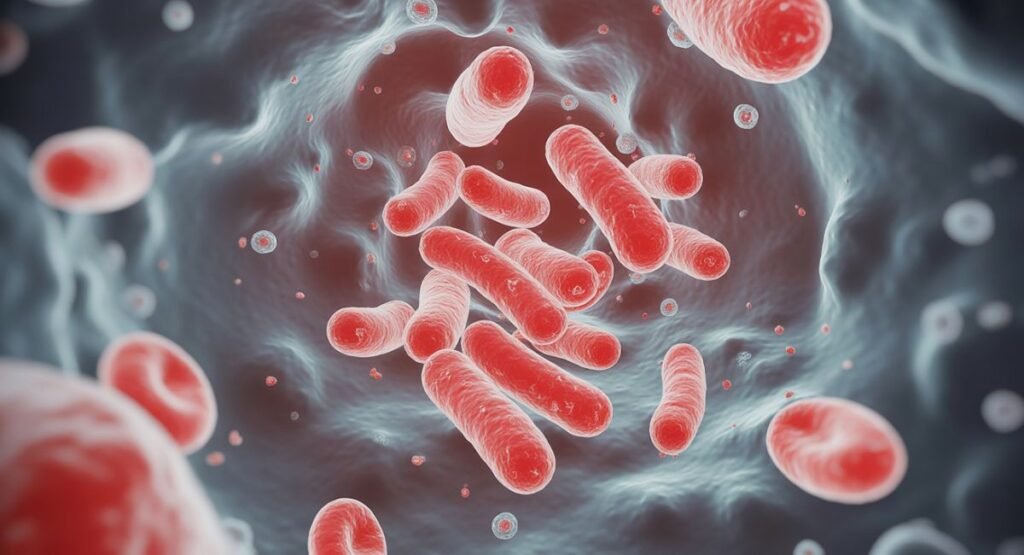Introduction
Whooping cough is a severe and contagious disease that usually affects children, but it can also affect adults. This disease is caused by a bacterium called “Bordetella pertussis” and affects the respiratory tract. The most prominent symptom of this disease is coughing spells that make a “whistling” sound during breathing, which is called “whoop” in English.
Whooping cough has been present in human society for centuries and has proven to be fatal many times. Despite the availability of a vaccine, the disease is still present worldwide, especially in areas where the immunization system is not strong.

Causes of the disease
Whooping cough is caused by the bacterium “Bordetella pertussis,” which is spread from one person to another through the air. When an infected person coughs or sneezes, small bacterial droplets are added to the air that can infect nearby people.
This bacterium enters the nose, throat, and lungs and causes an infection, which causes the airways to swell and coughing attacks to begin.
Symptoms
The symptoms of whooping cough appear in three stages:
Initial stage (Catarrhal Stage)
This stage is like the flu and generally lasts from 1 week to 2 weeks.
Mild fever
Runny nose
Sneezing
Mild cough
Because these symptoms are similar to the common cold, it is difficult to accurately identify the disease at this stage.
Second stage (Paroxysmal Stage)
This is the most dangerous stage of whooping cough, which can last 1 to 6 weeks or more. The following symptoms appear in this stage:
Severe coughing spells
Whistling sound after each spell
Vomiting
Sleep disturbances
Bluish or reddened face
Weakness and fatigue
This phase can pose a serious risk to children’s lives, particularly if immediate treatment is not administered.
Convalescent Stage
This stage can last for a few weeks or months. The cough gradually subsides, but in some cases it persists for months, also known as the “100-day cough.”
Affected people
Whooping cough can affect people of all ages, but the following are most at risk:
Young children, especially those who have not been vaccinated
Older people
Pregnant women
People with weakened immune systems
Diagnosis
Whooping cough is diagnosed using the following methods:
Medical history and examination
The patient’s cough pattern and other symptoms are carefully evaluated.
Laboratory tests
A sample from the nose or throat is taken, and the bacteria are identified through culture or PCR testing.
- Blood tests
Sometimes the disease can also be confirmed by an increase in the number of white blood cells in the blood.
Treatment
Whooping cough is treated in the following ways:
- Antibiotics
In the early stages of the disease, antibiotics such as “Azithromycin” or “Erythromycin” are beneficial.
If the disease is in the late stages, antibiotics do not kill the virus but can reduce the severity of the disease.
- Symptomatic treatment
General medicines for fever, pain and cough
Relief of breathing through salt water or steam
Increased consumption of water and fluids
Rest and quiet environment
- Hospital admission (in severe cases)
Giving oxygen
Intravenous fluids
Ventilator to help with breathing
Precautions
Immunizations
The DTaP vaccine is given to children at various stages after birth.
The Tdap vaccine is given to adults, especially pregnant women and close relatives of children.
Prevention of infection

Stay away from infected people
Use a mask
Wash hands frequently
Cover your mouth while coughing and sneezing
Benefits of vaccines
Vaccines provide protection not only to individuals but also to society as a whole.
The spread of the virus can be prevented through herd immunity.
The mortality rate among children can be significantly reduced.
Recent global trends
Some countries have seen an increase in pertussis cases due to vaccine avoidance or delay. The WHO and CDC have expressed concern about this. Recently, cases have been reported in some states in the United States, due to which this topic was also trending on Google Trends.
Conclusion
Pertussis is a serious but treatable disease. The most effective means of preventing it are vaccination and timely treatment. We should vaccinate our children on time, keep distance from sick people, and follow the rules of health and hygiene.
If we take precautions and spread information, we can protect our society from this disease.



